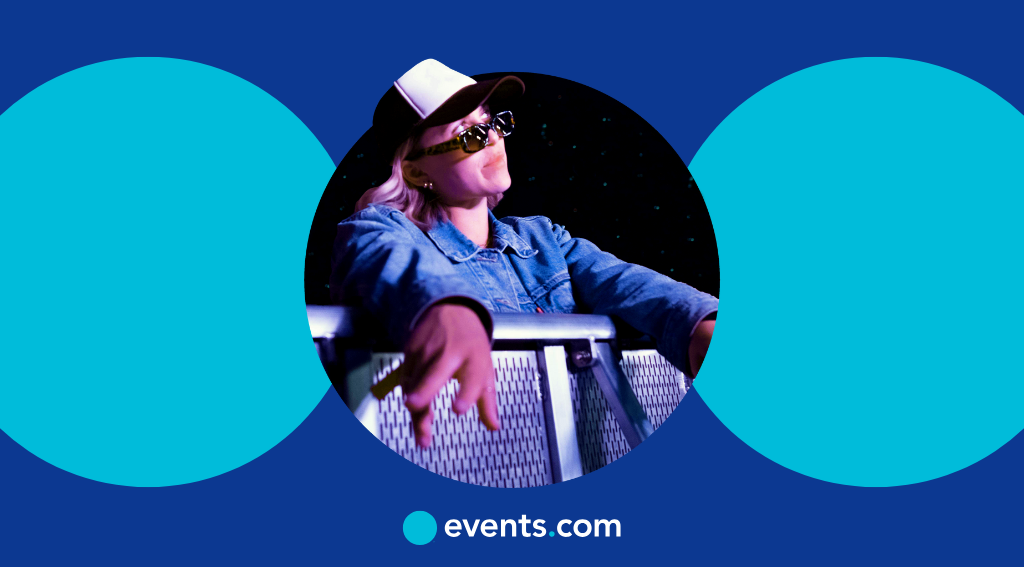Whether you’re planning a race, concert, festival, or virtual event, asking yourself how to increase event attendance is crucial for its success. However, with so many events happening every day, virtually or in person, standing out and attracting attendees can be challenging. Fortunately, there are several strategies you can use to increase event attendance and make your event a hit.
Why Might Your Event Attendance Be Low?
Before coming up with a solution, it’s always best to understand the root of why your event’s attendance may be low. It all starts with your marketing strategies. Perhaps you’re not marketing to the right people or through the right avenues. Or it’s possible that you are marketing to the right people through the right channels, but you’re not using the right incentives to make your event a must-attend experience. A successful event is usually not the result of just one action or idea but the combination of several strategic approaches.
8 Tried and True Ways To Increase Event Attendance
Don’t waste your time trying to up your attendance with methods that don’t work. These strategies to increase event attendance have been tried and tested by event organizers and have yielded positive results time and time again. By implementing these tips, you’ll be well on your way to boosting attendance at your next event and making it a resounding success.
1. Simplify the Event Registration Process
One of the most significant barriers to event attendance is the complicated registration process. If registering for your event is a hassle, potential attendees may get frustrated and decide not to bother. It’s similar to e-commerce, where a frustrating checkout process is part of why almost 70% of online shoppers abandon their carts, according to a Baymard Institute study. This is clearly a common issue. However, there are many ways to help you make it easier for possible attendees to get event tickets:
- Use an online registration system: Online registration systems make it simple for attendees to sign up and pay for your physical or virtual event. Make sure your registration page is user-friendly and easy to navigate.
- Keep it quick: Make sure the process to register for your event takes less than 5 minutes. People are busy, and if your system is long and complicated, they may decide it’s not worth the effort.
- Make the process mobile-friendly: To make the event registration process more accessible, be sure your registration page works seamlessly on a smartphone or tablet.
2. Know What Your Target Audience Wants
Understanding your target audience is critical when it comes to increasing event attendance. You need to know what interests them, what they value, and what motivates them to attend events. Here are a few ways you can gather information about your target audience:
- Conduct a survey: Surveys are a great way to gather information about your target audience. Ask questions about their interests and what they look for in events.
- Create buyer personas: Buyer personas can help you understand the demographics, interests, and motivations of your target audience. Use these personas to create your marketing messaging.
- Analyze social media: Look at what your target audience is liking, following, and commenting on. Everyone is online, and so are a lot of their opinions, so this is a great way to get candid insights and valuable information about what your audience wants.
3. Offer an Early Bird Incentive
Offering an early bird incentive is a trusted strategy for increasing event attendance. Early bird incentives provide attendees with a discount or special offer if they register for your upcoming events early. This sense of urgency may motivate them to take action sooner rather than later.
This strategy also helps event organizers plan and budget appropriately. To effectively offer an early bird incentive, it’s important to set a clear deadline for the incentive and properly promote it. You can do this through various marketing channels, such as email or social media.
4. Build Up Your Email List
Building up your email list is an important strategy for increasing event attendance. Email marketing allows you to communicate with potential attendees directly and effectively. Additionally, everyone on your email list already has at least some knowledge of you, so they are more likely to take notice of your emails than if they just happened to find you on the internet. Here are some tips for building up your email list:
- Use lead magnets: Offer a lead magnet, such as a free resource or discount, in exchange for attendees’ email addresses.
- Use social media: Post on social media to encourage people to sign up for your email list.
- Partner with other brands and organizations: Joining forces with others can help you increase your reach to promote your email list and get more sign-ups.
- Optimize your email content: Make sure your email content is relevant and valuable to your subscribers to keep them engaged. When emails are personalized, marketers see up to a 20% boost in sales.
5. Use Social Media Platforms to Your Advantage
Social media is one of the most powerful tools for awareness, and using social channels correctly can be a highly effective way to increase event attendance. Social media allows you to reach a vast audience, engage with potential attendees, and build excitement around your event. Here are some tips for using social media posts to your advantage:
- Post across multiple social media channels: Your ideal audience could be more active on LinkedIn, Twitter, Facebook, Instagram, TikTok, or other platforms, so post on as many as possible.
- Use an event hashtag: Create a unique hashtag specific to your event to make it easier for people to find and share information. You can also use popular hashtags related to your event to increase your reach on social media.
- Post regularly: Create a strong social media presence and remain top of mind by regularly posting relevant and engaging content.
- Use digital marketing tools: Smart digital marketing tools can help make the process of posting on social media much easier to manage.
- Utilize paid social media advertising: If it’s in your budget, paid social media advertising can be highly targeted to reach specific demographics and interests.
6. Leverage Feedback From Past Event Attendees
Leveraging feedback from past event attendees can give you valuable insights into the event’s strengths and weaknesses. This helps you identify areas that can be tweaked to make future events even more enticing. Attendees can provide insights into your past event’s overall appeal, the quality of the content, the food, the music, and just about everything else.
Additionally, by addressing feedback and making changes, organizers can demonstrate to past and potential attendees that they value their input and strive to improve events, increasing the number of repeat attendees and enhancing word-of-mouth marketing.
7. Get Influencers On Board
Influencers can help to increase awareness for your event by generating buzz and excitement among your target audience. When selecting influencers to work with, however, it’s important to identify people who align with your event’s brand and target audience. Here are some tips for getting influencers on board:
- Research and identify potential influencers: Look for influencers who have a large and engaged following in your industry or niche.
- Build relationships: Reach out to potential influencers and get to know one another before pitching them for event promotion.
- Make it easy for them: Give influencers valuable content that they can share with their followers, such as sneak peeks and behind-the-scenes footage.
8. Create Enticing Event Content
Creating enticing event content is a crucial factor for attracting attendees and increasing event attendance. Event content can be anything from marketing materials and website copy to social media posts and event programming. If your content is great, your audience is more likely to trust that the event itself will be great as well. Here are some ideas for creating compelling event content:
- Focus on your target audience: Tailor your event content to your target audience to appeal to their interests and desires.
- Use visuals: Use high-quality images, videos, and graphics to make your event content more engaging and memorable. If you have them, you can also use pictures from past events.
- Highlight sponsors and activities: Showcase your sponsors, high-profile attendees, and event activities to generate excitement and encourage attendees to register.
- Leverage storytelling: Use storytelling to connect with potential attendees and communicate the unique value of your event. If this isn’t within your skill set, work with a copywriter who can help you tell your events’ stories.
Monitor Your Event Attendance Rates With Event Management Software
After you increase event attendance with these tips, the next step is to accurately track event attendance. Proper event attendance tracking is critical to understanding the success of your event and making necessary adjustments. Event.com’s event management software can help you do this and so much more. This software allows you to track valuable data and analytics that can help you make informed decisions about your event strategy. You can also make the buying process faster for attendees and create custom landing pages. With Events.com, you can make the event planning process easier from start to finish and create an event that gets people coming back again and again.







